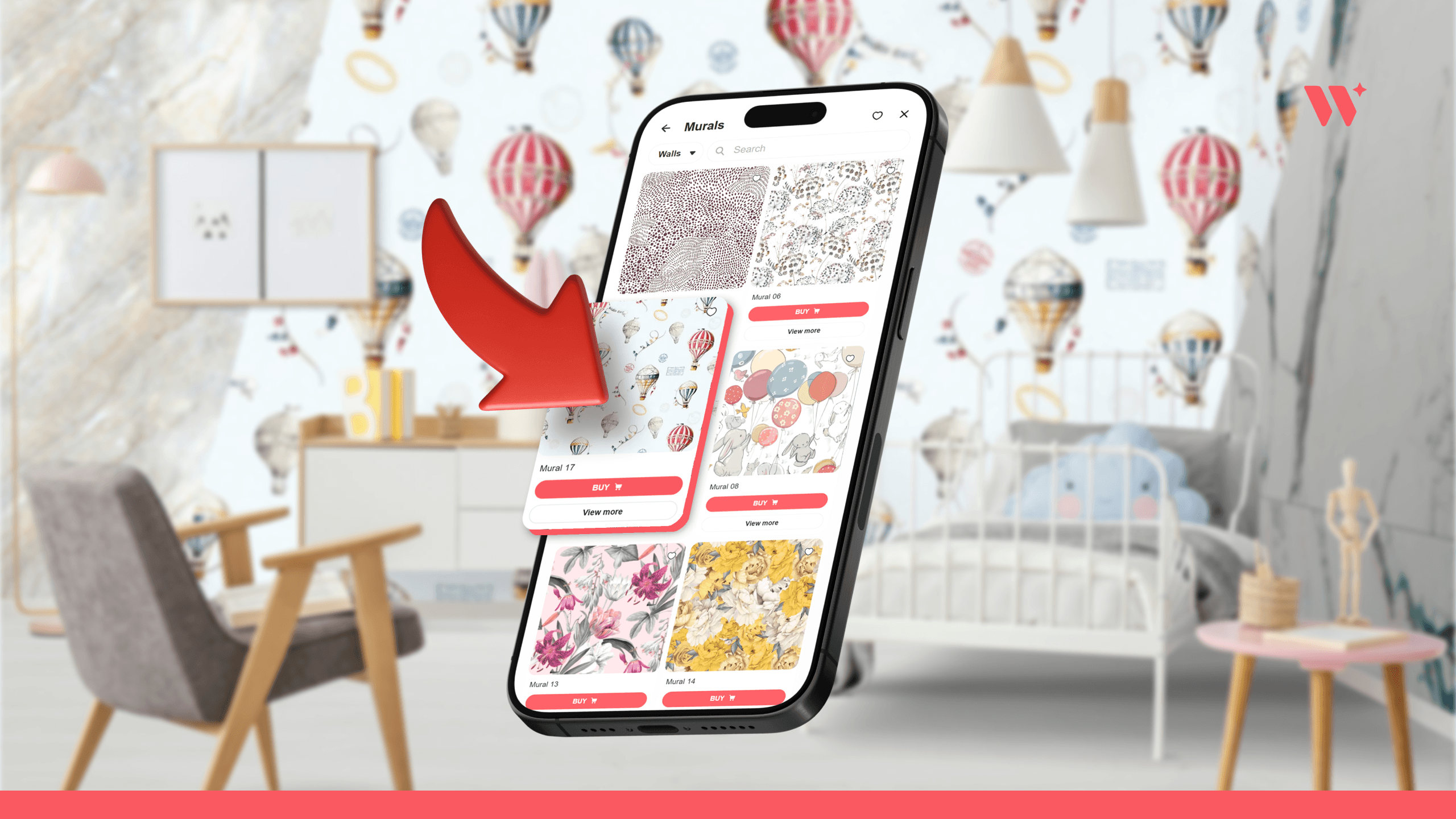Leveraging Product Sampling to Create a Seamless Customer Journey in Finishing Materials Online Shop

Choosing finishing materials for a home or commercial project is rarely a straightforward decision. Whether it’s flooring, tiles, or decorative wall coverings, these products are long-term investments that define the look and feel of a space for years to come. Customers want to make the right choice and avoid costly mistakes, which makes their journey from discovery to purchase more complex than in many other e-commerce categories.
One of the most effective ways to ease that journey is product sampling. Giving customers the opportunity to experience materials before committing builds confidence, reduces hesitation, and ultimately leads to more satisfied buyers. When combined with modern digital tools, product samples become even more powerful, offering a seamless connection between online browsing and real-world testing.
Why product samples matter in finishing materials
Unlike clothing or electronics, finishing materials are inherently tactile and visual. A photograph on sample products pages rarely captures the full essence of a material. Customers want to feel the texture of a tile, see how a floorboard looks under natural light, or check if a wallpaper shade matches their furniture. Even the best product description cannot replace the reassurance of holding a sample in hand.
This sensory gap is one of the biggest reasons online purchases in this industry take longer. Buyers hesitate because they can’t predict how a product will look and feel in their actual environment.
Product demonstration sample bridges that gap. When a small piece of the product arrives at their doorstep, they can finally make a confident decision. This not only reduces uncertainty but also accelerates the entire buying process.
Trust is another critical factor. Many customers fear that the product delivered will differ from what they saw online. A well-prepared sample builds trust in your brand. It says, “This is what you will get. No surprises.” Over time, this kind of transparency fosters loyalty, turning one-time buyers into repeat customers.
Building a thoughtful sampling experience
Offering samples is not just about cutting a piece of material and mailing it out. To truly enhance the customer journey, sampling needs to be carefully integrated into every stage of interaction with your brand. It starts long before a sample is shipped and continues long after the customer receives it.
The first step is understanding why you’re offering samples in the first place. Many businesses see sampling as a simple promotional tactic. In reality, it’s a strategic investment. Some brands focus on increasing conversions for high-value purchases, others use it to test new product lines, while some rely on sampling to reduce return rates by ensuring buyers know exactly what they’re getting. Knowing your primary goal helps shape the entire process, from which products you choose to sample to how you follow up afterward.
Equally important is understanding your customers. Not everyone visiting your website is ready for a sample. Some are in early research mode, others are just browsing inspiration boards. Samples work best for customers who are actively choosing between a few options and are close to making a decision. Identifying these high-intent buyers makes your sampling program more efficient and cost-effective.
Product selection plays a major role too. Offering every single item as a sample can be overwhelming for both you and your customers. A curated selection – your bestsellers, new arrivals, or materials that often raise questions – is usually the smartest approach. It helps buyers focus on realistic options while allowing you to manage logistics better.
Then comes the process of ordering a sample. This is where many brands lose potential customers. If the process is complicated, involves long forms, or requires customers to call or email, many will abandon it altogether. A seamless digital experience is key. Ideally, a customer should be able to request a sample directly from the product page with just one click. If you’re using a tool like Wizart Visualizer, the process is even more natural. A buyer can try different combinations of materials in a virtual room and instantly order samples of the ones they like most.
Finally, the journey doesn’t end with the sample delivery. A thoughtful follow-up can turn interest into a purchase. A simple message asking if the sample met expectations, suggesting complementary products, or offering a time-limited discount can make all the difference. It shows customers that you care about their project, not just the sale.
The role of digital tools in sampling products
Physical samples are essential, but today’s buying journey begins online. This is why digital tools are becoming indispensable in the finishing materials industry. They not only make it easier for customers to explore your products but also ensure that sampling happens at the right time, for the right products, and for the right audience.
One of the most impactful tools in this regard is a visualizer. With solutions like Wizart Visualizer, customers can upload a photo of their own room or use pre-set interiors to try different tiles, flooring, or wall coverings virtually. This stage allows them to narrow down choices before requesting a sample, making the whole process more intentional. Instead of ordering ten samples blindly, they can visualize how each option would look in their space and then select two or three to test physically. This saves resources for both sides and speeds up decision-making.
Integration is another major advantage of digital tools. Many businesses fear that adding advanced visualization features to their website will require months of development. Wizart is designed for quick deployment, often within days, without disrupting your existing e-commerce platform. That means you can start offering a more interactive, sample-friendly shopping experience almost immediately.
Managing your product catalog digitally is just as important. A strong visualizer solution provides an intuitive way to upload and update your product range. Every texture, every color variation can be presented accurately, ensuring that what customers see online matches the sample they receive later. This consistency builds trust and reduces the chances of disappointment or returns.
Finally, digital tools bring powerful analytics. They show you which materials customers visualize most, which combinations they experiment with, and which products trigger the most sample requests. This data helps you predict demand, optimize your sampling products stock, and even plan future launches based on real customer behavior.
Creating a seamless journey from start to finish
When sampling is combined with digital support, the customer journey transforms. Imagine this scenario: a homeowner is planning to renovate their living room. They visit your website and start exploring tiles using Wizart Visualizer. After experimenting with several options, they find two that perfectly match their furniture. With one click, they order samples of both. The samples arrive quickly, packaged neatly, reflecting the same quality shown online. A day later, they receive a helpful email with installation tips and a limited-time offer for their chosen product. Confident in their decision, they place the full order.
This is what a seamless journey looks like – no frustration, no second-guessing, just a guided process from inspiration to final purchase. It minimizes friction at every stage: discovery, exploration, testing, and buying. Instead of feeling overwhelmed by endless options, customers are supported by clear visuals, easy access to samples, and helpful follow-ups that make decision-making natural and stress-free.
For businesses, this approach translates into higher conversion rates, fewer returns, and stronger brand loyalty. It also generates valuable feedback. Every requested product sample and every follow-up interaction teaches you more about what customers truly want, helping you refine your offer over time.
Conclusion
In the finishing materials market, a product demonstration sample isn’t a luxury – it’s a necessity. Customers want to see and feel the materials before committing, and brands that make this process easy gain a clear competitive advantage.
Digital tools like Wizart Visualizer elevate sampling from a simple logistics task to a core part of the customer experience. They make it easy to explore materials online, narrow down choices, and request the right samples quickly. They ensure consistency between what’s shown on your website and what arrives in the customer’s hands. And they give you insights to make smarter decisions about your products and marketing.
When sampling and visualization work together, they create a buying journey that feels effortless and reassuring for customers. Instead of uncertainty and hesitation, buyers experience clarity and confidence. In an industry where every detail matters, that confidence is what turns browsers into loyal, long-term customers.
